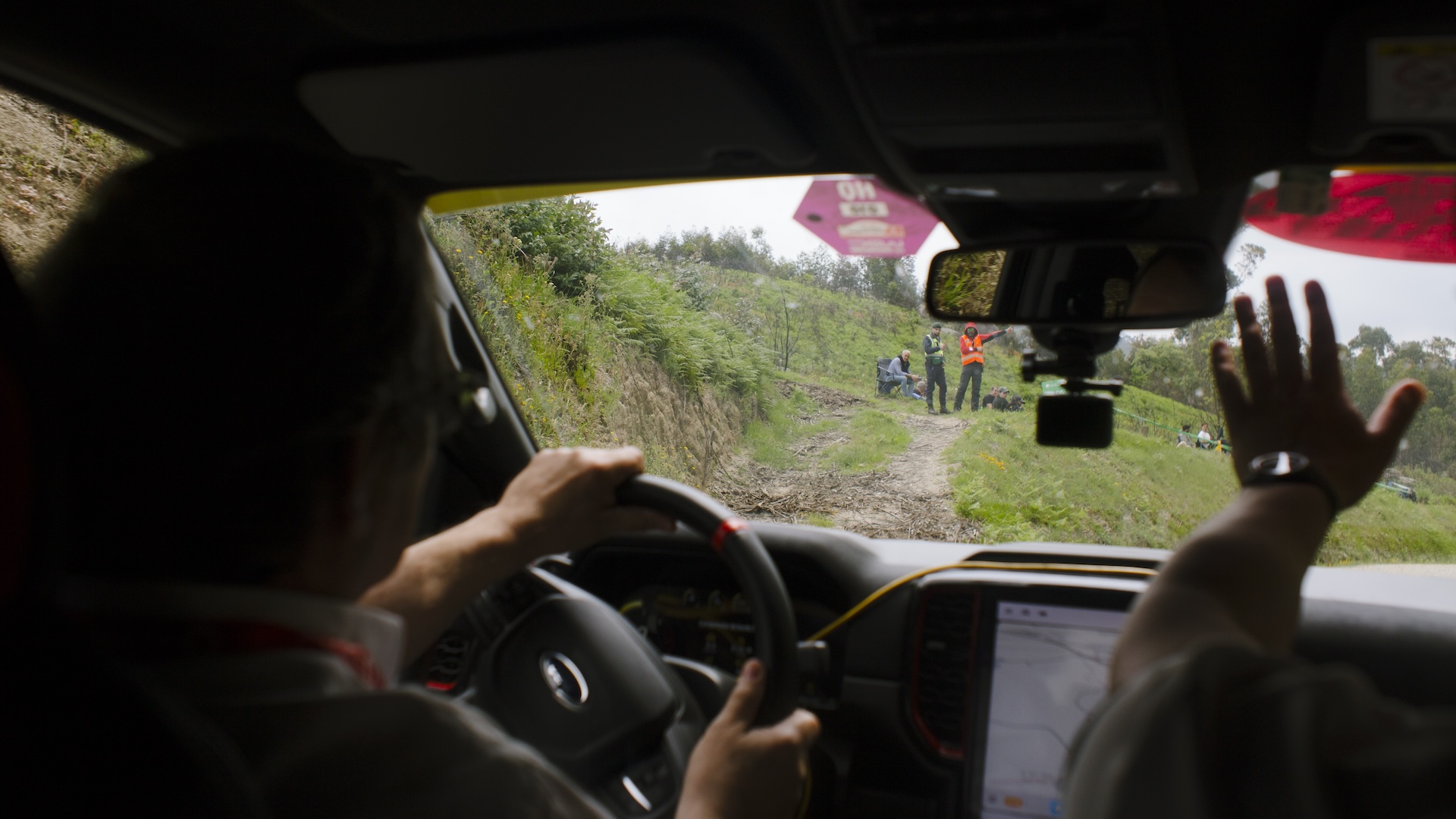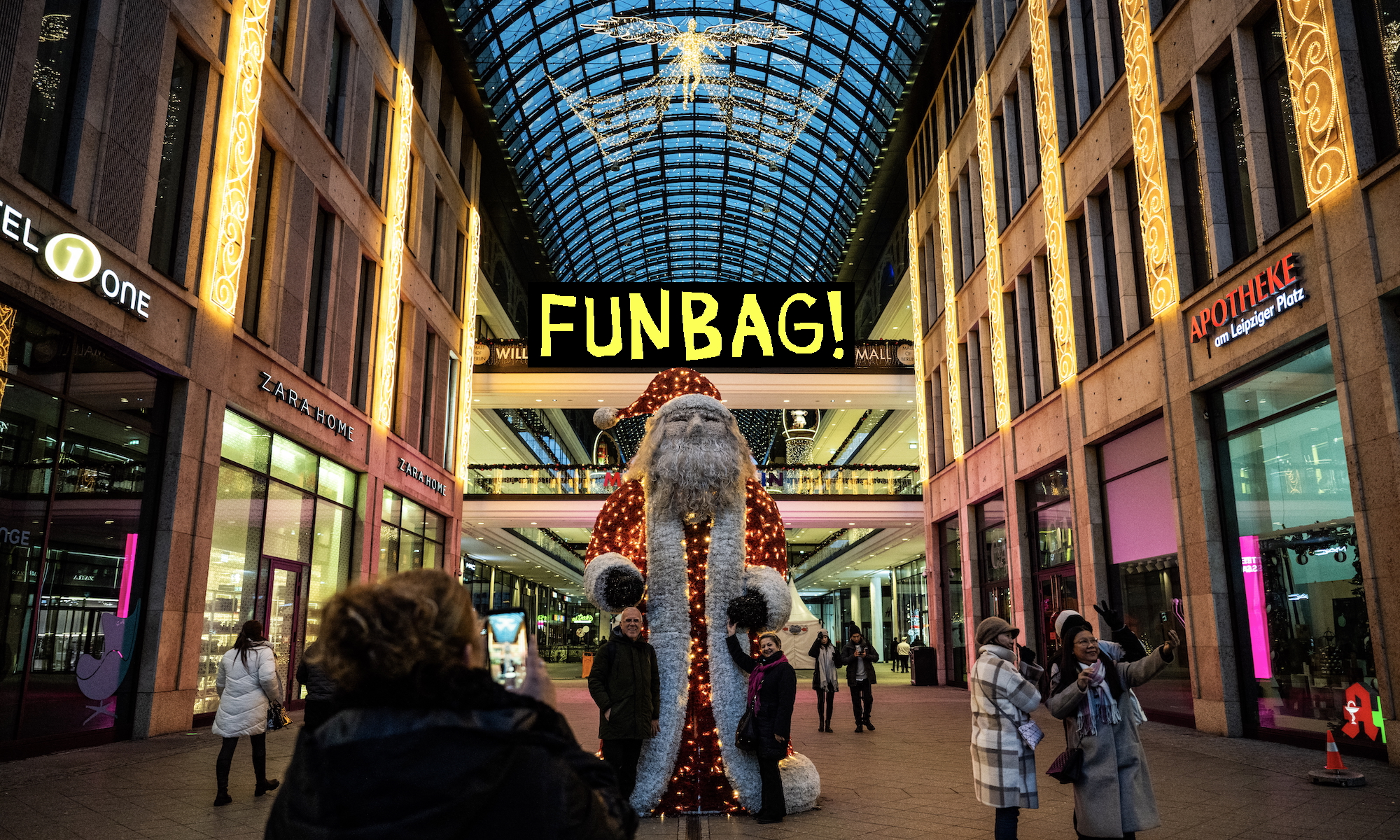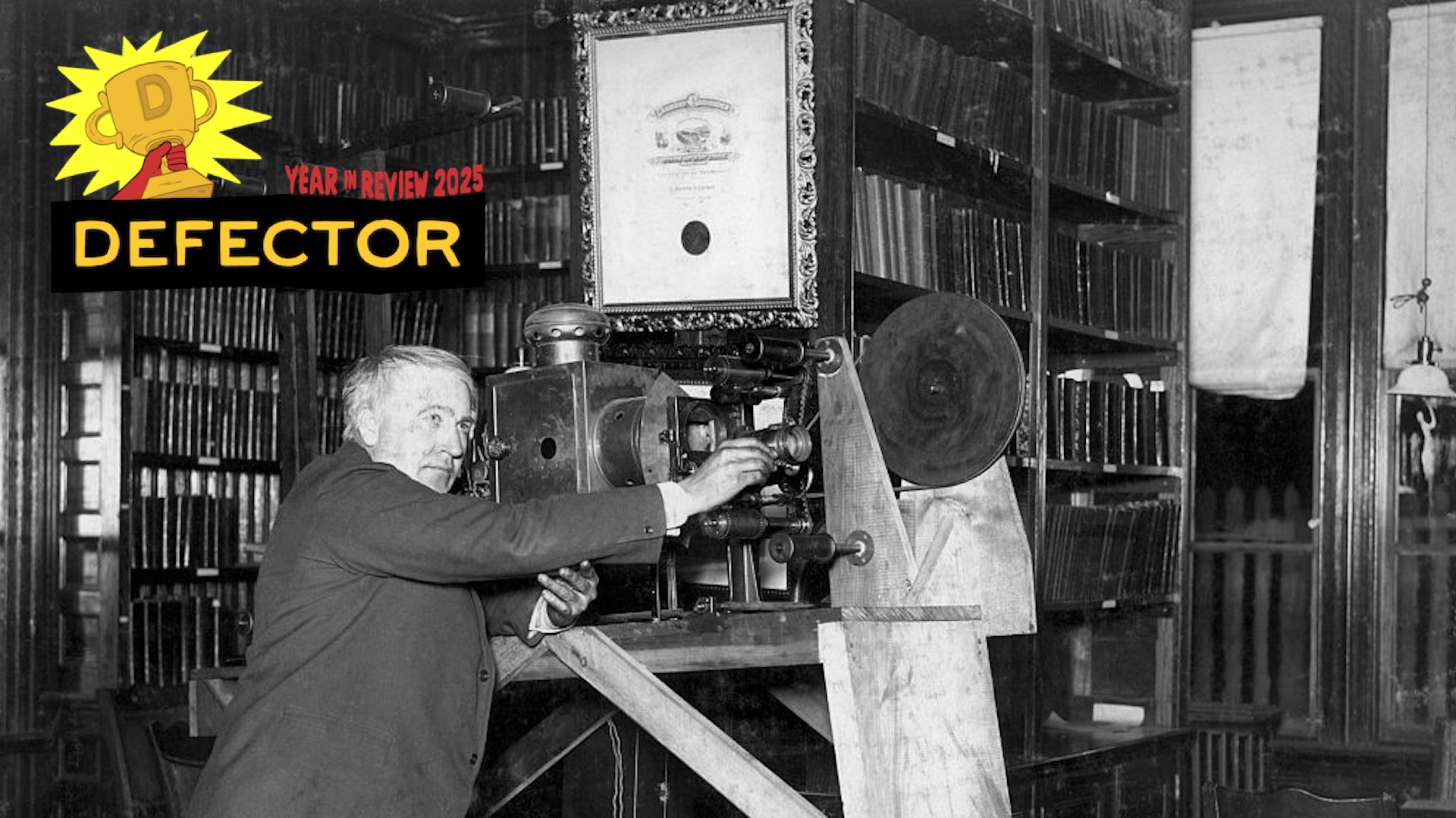“Eight hours per day, we’re not allowed to do more,” FIA World Rally Championship safety delegate Nicolas Klinger jokes. “Eight hours in the morning, eight hours in the afternoon.”
I’m sitting with Klinger in the WRC’s race control room at the Rally de Portugal, which took place in May. Klinger has been here since 6:00 a.m. and won’t leave until 9:00 p.m. or later. He’s doing important work, scanning video feeds of the 337-kilometer course for what he calls “mushrooms.” Before every stage, the WRC sends out a car to move spectators standing in unsafe locations. But some spectators wander back after the safety car is gone, or hide as it goes by, popping up like a mushroom after it passes.
In 2019, Klinger was in that spectator safety car. It was his first rally as an FIA (then-deputy) safety delegate, sitting in with his then-boss, the legendary Group B rally driver Michèle Mouton, who had been working to modernize WRC safety since 2015. A former rally co-driver himself, Klinger can still remember the stage, the exact hairpin corner where they moved someone wearing a distinctive blue T-shirt and a red cap. Later, when he was watching the TV feed, he saw him. “He’s back!” Klinger repeats to me in the control room, his eyes lighting up like it was yesterday. That first blue and red mushroom gave him the idea that maybe the FIA could use its TV feed to spot spectators live on stage.
Just two rallies later, Klinger had a preliminary system at work. “I was standing in the TV compound and sending texts to the clerk of the course. Then it was Cataluña; then the clerk of the course came with me.” Klinger laughs, “Then they thought we were too noisy.”
Kicked out of the TV control room, Mouton and Klinger got a live feed in race control, too. That started at the beginning of the 2020 season and has been in use ever since. It’s actually pretty quiet in here, though everyone starts yelling when an alarm rings off overhead. An automatic g-force meter in one of the cars has detected an impact. One of the Fords has clipped an embankment, somehow escaping without damage. “It’s OK!” Klinger reassures everyone as he pulls up the car’s onboard camera. “He’s going again.”
It takes a vigilant eye to follow all this footage. I see Klinger pause and rewind another onboard in front of him. He points it out to the clerk of the course sitting beside him. We can see a fan leaning over the road, much too close for comfort. In Portuguese, the clerk calls over the chief safety officer, who radios down the line to the right marshal, who moves the spectator back to safety. From this control room, out into the middle of some forest 200 kilometers away, Klinger keeps watch.
It’s an effective system, but time- and resource-intensive. “We have an airplane running red hot with this material,” Timo Rautiainen turns to say. “All restreaming three seconds off.” A renowned rally co-driver, Rautiainen sits next to Klinger as FIA sporting delegate, observing the rally from a rules perspective. Indeed, pull up the Flightaware of 00-ASL and you’ll find a prop plane circling 8,000 meters over the rally. Inside, an A/V guy in front of a bank of receivers and transmitters picks up the video feeds of the rally cars, as well as the helicopters and TV crews chasing them. The plane also takes in their radio comms, telemetry, and GPS tracking, all beamed back down to rally HQ. It all then gets sent for processing to Helsinki and back via cable, as one FIA official later explains to me.
As Rautiainen puts it, circuit racing has it easy. Organizers funnel fans into stadium seating and protect them with permanent barriers and catch fences. In the WRC, the FIA and the rally organizers have to turn hundreds of miles of backcountry roads into something like a controlled environment. Here in Portugal, that means deploying: 41 rescue vehicles, 16 ambulances, 318 firefighters, 68 firefighting vehicles, 34 tow vehicles, three helicopters, six hospitals (on standby), 66 radio stations, 23 doctors, 24 nurses, and 16 pre-hospital emergency technicians, as well as 646 marshals on the stages, supplemented by 1,213 police officers and 2,312 members of Portugal’s military police, the Guarda Nacional Republicana.
Not all rallies have such a strong police presence, but no other WRC event is quite like Portugal. While Sweden has its snow, Monte Carlo has its ice, and Finland has its jumps, Portugal has its fans. Organizers tell me they expect “more than 1 million spectators in the Centre and North of the country” to turn out to its dusty stages.
The rally is running smoothly; Klinger has spent months working with the organizers to make sure every detail is thought out. There have been no incidents, and no stages canceled or red-flagged.
For all of its reputation, everyone I talk to agrees: Rally Portugal is incredibly well-organized. Everyone works to make sure that the rally returns for another year. Maybe that’s because no rally has had as dark a past as Portugal.
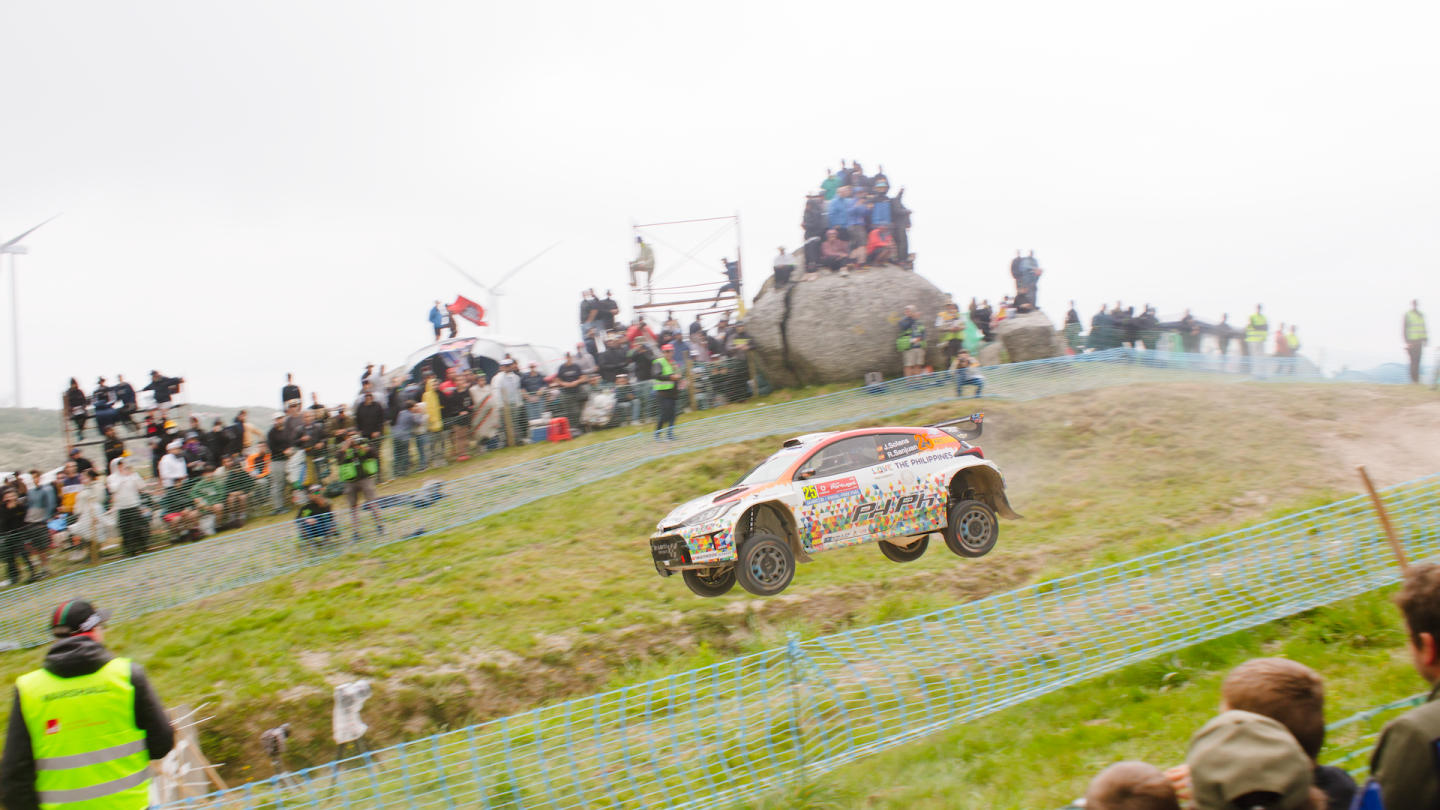
The helicopter peels off overhead and then it pops into view: a rally car, airborne. For a moment it seems like it will never come down, like every eye in the crowd is holding it aloft. I’m surrounded by beer and barbecues, screaming spectators blowing airhorns and revving chainsaws at each other. But everyone is far back from the road itself. Exactly 40 years ago, this view was unthinkable.
Maybe you’ve seen this spot before: Fafe, the biggest jump on the WRC calendar. It is the crescendo of Rally Portugal, a high-speed fourth-gear crest only a few hundred meters from the finish line. It’s rather far out in the mountains, in a spectacularly beautiful corner of the country. Wildflowers in purple and yellow pop beside huge exposed rocks, now shadowed by elephantine wind turbines. The narrow ridge road tracks the line of windmills, then drops down into a bowl that forms a natural stadium, fans turning the hillsides into grandstands. The record jump is around 40 meters, but it’s a tricky spot—not quite flat in fourth gear, drivers lift off the gas slightly to keep the car from nosing down midair. Get it even slightly wrong, and you clip a hard berm or dig face-first into the gravel—both will roll your car. In decades past, Fafe was notorious for how close spectators were allowed to get to the action—you can find video clips in which spectators stood in the middle of the road, only parting just in time to allow a rally car to soar over and through them.
“That was absolutely the worst place in the world,” Juha Kankkunen tells me, sitting inside the air-conditioned hauler of the Toyota WRC team, out of the strong spring sun. Today Juha co-runs the team, the most successful in the WRC at the moment, but in 1986 he was fighting for the championship as a driver. Fans lining the road pushed each other closer, closer to the action until they were touching the cars as they went past.
“That was too much. I mean, they found, from my car, I was driving for Peugeot at that time, 205 T16, they found fingers from the air intake on the back of the car. You know, there was no way we could continue.”

It was on the first day of the 1986 rally that fellow Finn Timo Salonen clipped a crowd, hitting a TV camera hard enough to tear off the back half of his car’s bodywork. Only a few minutes later, Portuguese driver and co-driver Joaquim Santos and Miguel Oliveira swerved to avoid a spectator in the road, counter-steered, and speared off course. To say that Santos and Oliveira went into a crowd is an understatement. Half a million fans were in that forest alone; the edge of the road was a wall of people. Two died on the scene—a 36-year-old mother and her son—and another died in the hospital. Some 32 other spectators were hospitalized, the mother’s husband and daughter included among them.
In 1986, the rally kept going with lower classes of cars, but Kankkunen and the rest of the frontrunners convened after the stage. With Fafe yet to be run, they knew that the worst was yet to come, as Autosport notes in a detailed retrospective.
“Then the factory teams, we decided that we are not killers. We can't guarantee the safety of the spectators, so we [had] better [...] stop. And then we stopped,” Kankkunen explains. Following the fatal crash of driver and co-driver Henri Toivonen and Sergio Cresto in Corsica two months later, the WRC banned the top Group B category in a bid to lower the temperature of rallying as a whole. “But then that made a huge change. We came back in ‘87, and then it was a different story,” Kankkunen says. “People calmed down a lot. There were still people near the road, but not that much.”
When the WRC returned to Portugal in 1987, it did so with delineated spectator zones and a formal “zero” car to pre-run the course. The drivers in that car were responsible for checking that the route is safe, as well as alerting spectators of the race cars soon to follow. José Pedro Borges drove that zero car in Portugal in 1987. A former competitor in the ‘70s and ‘80s, Borges now helps organize the event as deputy clerk of the course. At this year’s rally, he and the FIA allowed me to tag along in the spectator safety car, a brand-new Ford Ranger Raptor on loan from a car dealership, as he makes his rounds on the course.
With us is Priit Priimägi, the FIA’s deputy safety delegate for the WRC. Just as Mouton did, Priimägi sits right-seat to Borges and acts as on-the-ground spotter for any spectators standing in the wrong spot. As part of what the FIA now calls its “safety caravan” of typically six or seven vehicles, we’ve gone through two stages already. They’ve been remarkably routine. Just about everyone is where they should be, and marshal after marshal signals to us that their area is secure. It’s a short drive now to the start of Fafe. “The first spectators arrived on Friday,” Priimägi says. “They came 10 days before the rally for the best spots.”

The talk of this year’s rally is the schedule. Due to a particularity of the funding of the rally, the organizers have stacked two 14-plus hour days back-to-back. Even eight-time champion (and eventual rally winner) Sébastien Ogier struggles to keep up with the demands. There are so many stages with so little rest between them that Ott Tänak tells reporters he and his fellow drivers feel treated “like animals.”
Today, the fourth and final day of the rally, Borges and Priimägi have been on the go since 4:00 a.m. They have driven 300 stage kilometers so far in this rally, and an extra 1,000 counting the road sections. “The drivers do double it,” Priimägi points out. Like Klinger and Borges, Priimägi used to compete in rallies. The long days are nothing new, but this event is wearing everyone thin.
I notice Priimägi taking photos on his phone throughout the drive. These will be illustrations for a 40-page report that he and Klinger will file after the rally, covering every detail of safety: what worked, and what could be improved. There is no downtime. A safety review meeting for the rally takes place immediately after the winners spray champagne on the podium. After that, preparations begin for Sardinia and Greece, in June and July respectively. Planning for Estonia and Finland, in July and August, kicks off at the same time.
A rally organizer himself for his native Rally Estonia, Priimägi is proud to pull up on a tablet the Estonian software Eventhos. It’s what he and the WRC use to create digital safety plans for each rally, down to the most granular detail. He zooms in from a global satellite view down to a single corner. Spectator access paths, emergency vehicles, marshals, caution tape—everything is on here. These plans take months to prepare, and months more to finalize with the FIA.
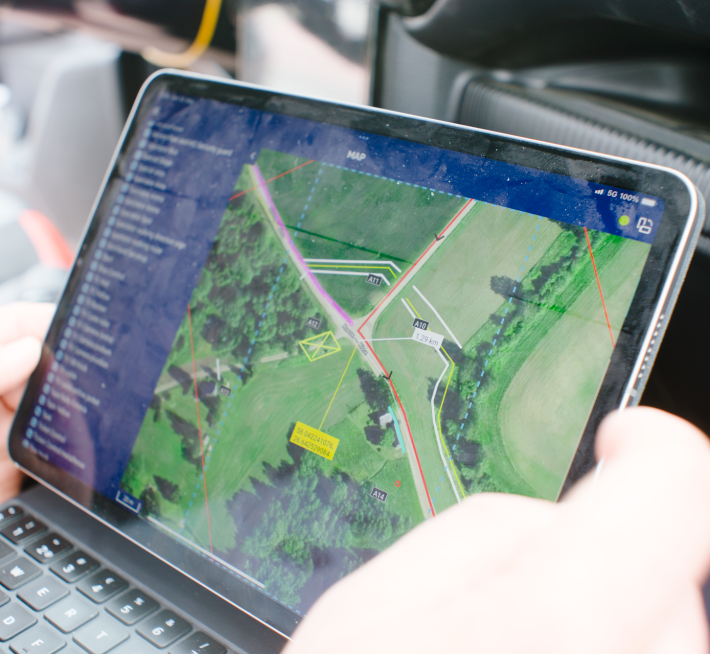

Like Klinger, the time that Priimägi spends spotting spectators barely measures up to the time that goes into pre-race safety preparations. A painstaking process plots out where every spectator will stand, how they’ll get there, and who will keep an eye on them. These little revisions are done year after year, corner by corner, stage by stage, rally by rally. Riding in the car feels like the final pass over a very long checklist.
“One last push,” Priimägi says as we line up to the start control of Fafe, the last stage of a grueling week. As many spectators turn up to this stage as some other entire rallies. There could be 30,000 to 50,000 people watching the jump alone. “Let’s be sharp.”
